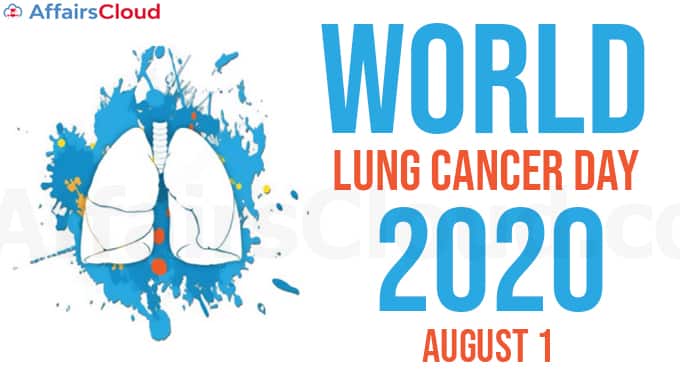 World Lung Cancer Day is observed annually on August 1 to raise awareness about the causes and treatment of lung cancer and its global impact, creating an educational movement to understand the risks of lung cancer and early treatment around the world.
World Lung Cancer Day is observed annually on August 1 to raise awareness about the causes and treatment of lung cancer and its global impact, creating an educational movement to understand the risks of lung cancer and early treatment around the world.
The day highlights the problems that can arise due to lack of adequate research funding.
- The World Lung Cancer Day campaign was initiated in 2012 by the Forum of International Respiratory Societies(FIRS) in collaboration with the members of the international lung health community such as the International Association for the Study of Lung Cancer (IASLC) and also including the American College of Chest Physicians (CHEST) in the U.S.
Significance of the day
The day reminds us that lung cancer continues to be one of the most common cancers worldwide, claiming more lives yearly than breast, colon and prostate cancers combined.
Facts about Lung Cancer
i.According to the World Health Organization(WHO) lung cancer is responsible for nearly 1 in 5 cancer deaths.
ii.The most frequently diagnosed cancer is lung cancer (11.6%), followed by female breast (11.6%) and colorectal cancers (10.2%)
iii.The lung cancer incidents around the world will increase by 38% to 2.89 million by 2030.
iv.Lung cancer is the leading cause of death from cancer at 1.74 million (18.4%), followed by colorectal (9.2%) and stomach cancers (8.2%).
v.The Lung cancer mortality is estimated to reach 2.45 million worldwide by 2030, a 39% increase since 2018.
Cancer survival rate in middle-income countries
The five-year cancer survival rate in middle-income countries for all types of lung cancer (19%) is lower than many other leading cancer sites, such as the colon (71%), breast (85%) and prostate (98.9%).
Access to treatment for Low-income & high-income countries
i.Low-income countries(where survival rates are significantly below the average) report only 15% availability of treatment through public health systems.
ii.More than 90% of high-income countries report vital access to care.
About Lung Cancer
Causes
Cigarette smoking(the biggest cause i.e., 80% ), Passive smoking, or secondhand smoke, Air pollution, Chemical Exposure, Genetic Mutations, Family History, Lung diseases, such as tuberculosis (TB) and chronic obstructive pulmonary disease (COPD), also create a risk for lung cancer.
Symptoms
The symptoms include change in mucus, chest or back pain, Spitting or coughing up blood, Cough, Difficulty in breathing, Hoarseness or problems of swallowing.
Diagnose
Tests that may be used to diagnose lung cancer include chest x-rays, CT and PET scans, bronchoscopy and needle biopsies
Treatment
i.Early-stage lung cancer is treated with curative-intent surgery or radiation therapy. Selective patients may benefit from chemotherapy after surgical resection.
ii.Molecular-targeted therapy against epidermal growth factor receptor (EGFR) mutations and anaplastic lymphoma kinase (ALK) re-arrangements attain tumor response rates of around 70%.
iii.Immunotherapy for lung cancer alone, or in combination with conventional treatments, can also improve outcomes for patients fighting lung cancer
iv.Environmental causes of lung cancer, such as radon and asbestos, can be monitored and reduced.
Note– The advanced stage lung cancer is not curable, many patients may have symptom improvement and survival prolongation by effective treatment.
Key Info
The IASLC World Conference on Lung Cancer (WCLC) is the largest organisation in the world of its kind that only deals with lung cancer.
Recent Related News:
i.World NoTobacco Day 2020: May 31
ii.World Brain Tumor Day 2020: June 8
About FIRS
The FIRS was established in 2001 by the international professional respiratory societies, CHEST, American Thoracic Society (ATS), Asian Pacific Society of Respirology (APSR), Asociación Latino Americana De Tórax (ALAT) among others.
Headquarters– Lausanne, Switzerland




